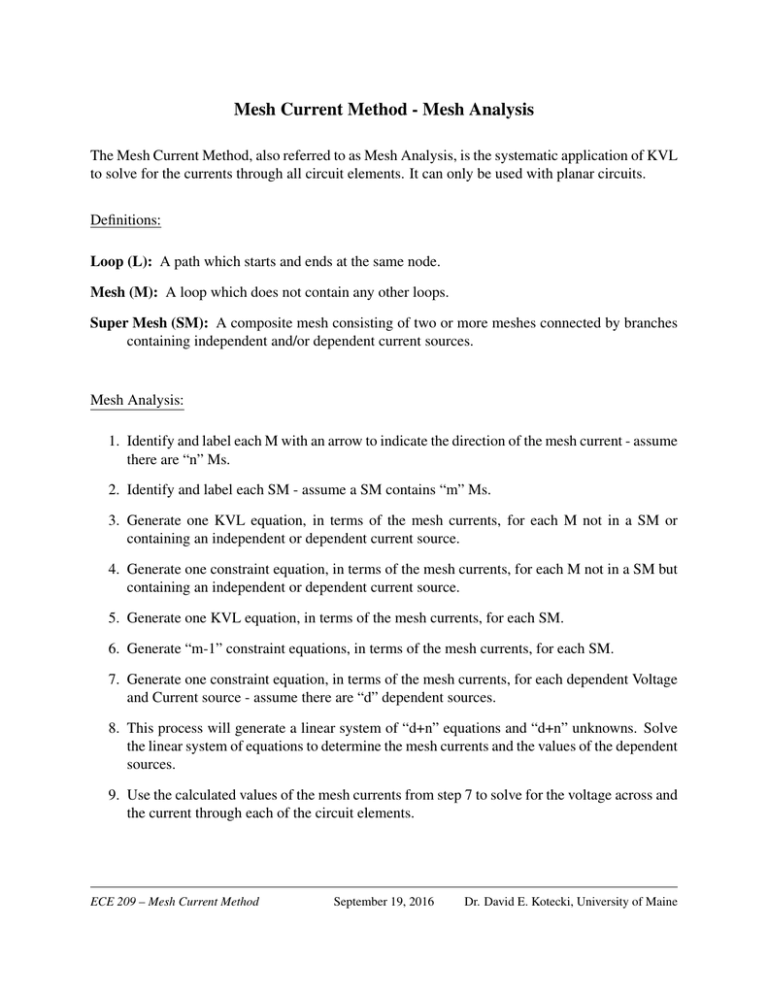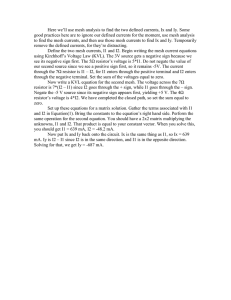Mesh Current Method
advertisement

Mesh Current Method - Mesh Analysis The Mesh Current Method, also referred to as Mesh Analysis, is the systematic application of KVL to solve for the currents through all circuit elements. It can only be used with planar circuits. Definitions: Loop (L): A path which starts and ends at the same node. Mesh (M): A loop which does not contain any other loops. Super Mesh (SM): A composite mesh consisting of two or more meshes connected by branches containing independent and/or dependent current sources. Mesh Analysis: 1. Identify and label each M with an arrow to indicate the direction of the mesh current - assume there are “n” Ms. 2. Identify and label each SM - assume a SM contains “m” Ms. 3. Generate one KVL equation, in terms of the mesh currents, for each M not in a SM or containing an independent or dependent current source. 4. Generate one constraint equation, in terms of the mesh currents, for each M not in a SM but containing an independent or dependent current source. 5. Generate one KVL equation, in terms of the mesh currents, for each SM. 6. Generate “m-1” constraint equations, in terms of the mesh currents, for each SM. 7. Generate one constraint equation, in terms of the mesh currents, for each dependent Voltage and Current source - assume there are “d” dependent sources. 8. This process will generate a linear system of “d+n” equations and “d+n” unknowns. Solve the linear system of equations to determine the mesh currents and the values of the dependent sources. 9. Use the calculated values of the mesh currents from step 7 to solve for the voltage across and the current through each of the circuit elements. ECE 209 – Mesh Current Method September 19, 2016 Dr. David E. Kotecki, University of Maine





